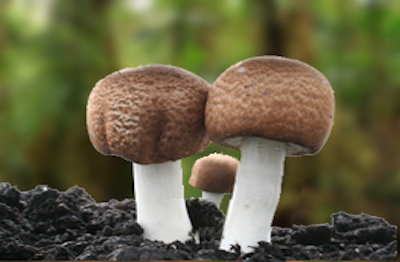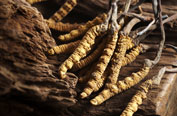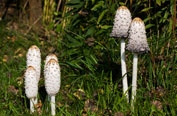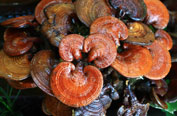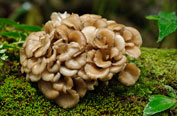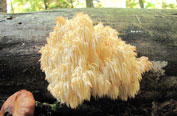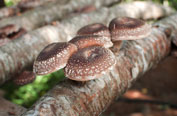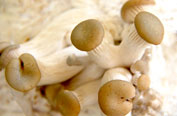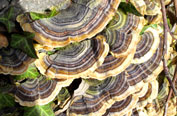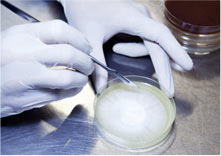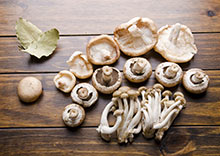

The way nature manures itself.
Teamwork for 500 million years.
How plants will benefit from mycorrhiza.
Mycorrhizal fungi are specialised to colonize the root system of plants. A fine network of mycelium covers the roots. This extends their surface area and increases the absorbing capacity of the roots relating to water and nutrient supply and protects the plant from disease.
This is to say that plant roots in symbiosis with mycorrhizal fungi are more effective in the absorption of nutrients and water than the roots by themselves. Find out more about mycorrhiza and how your plants and crop yield will benefit from this relationship!
Increase of crop yield with the aid of mycorrhiza
Teamwork for 500 million years.
Latest research and fossil records have shown that mycorrhizal symbioses developed about 500 million years ago. 90 % of plants will establish this symbiotic relationship with mycorrhizal fungi! This allows the assumption that for ancestral plants, colonizing firm land was only possible by establishing this symbiosis with fungi.
What exactly will mycorrhizal fungi do to my plants?
Mycorrhizal fungi colonize plant roots and extend the root system into the surrounding soil. By attaching to the feeder roots, mycorrhiza greatly extends the effective absorbing area available to plants. Research has demonstrated that mycorrhizal filaments can explore volumes of soil hundreds to thousands of times greater than the roots themselves.
This relationship is beneficial because the plant enjoys improved nutrient and water uptake. In addition, the relationship is beneficial by providing more uniform growth, increased leaf size, more flowering and increased vegetable yield.
Crop yield of wheat under
well watered and water stressed conditions:

Mycorrhizal fungi increase the surface of plant roots!
These fungi increase the surface absorbing area of roots 10 to 100 times, thereby greatly improving the ability of the plants to utilize the soil. Several miles of fungal filaments can be present in less than a thimbleful of soil. Mycorrhizal fungi increase nutrient uptake by increasing the surface absorbing area of roots, and by releasing powerful chemicals into the soil that dissolve hard to capture nutrients such as phosphorus, iron and other "tightly bound" soil nutrients. This extraction process is particularly important in plant nutrition and explains why non-mycorrhizal plants require high levels of fertilizers to maintain their health. Mycorrhizal fungi form an intricate web that captures and assimilates nutrients. In non-mycorrhizal conditions much of this fertility is wasted or lost from the system.
Mycorrhizal fungi balance the immune system of plants! Mycorrhizal fungi are involved with a wide variety of other activities that benefit plant establishment and growth. The same extensive network of fungal filaments is important in water uptake and storage. In non-irrigated conditions, mycorrhizal plants are under far less drought stress compared to non-mycorrhizal plants.
Mycorrhizal fungi also improve the soil structure! Mycorrhizal filaments produce humic compounds and organic "glues" (extracellular polysaccharides) that bind soils into aggregates and improve soil porosity. Soil porosity and soil structure positively influence the growth of plants by promoting aeration, water movement into soil, root growth, and distribution. In sandy or compacted soils the ability of mycorrhizal fungi to promote the improvement of soil structure is as important as seeking out nutrients.
Don’t soils already contain mycorrhizal fungi?
Undisturbed soils are full of beneficiary soil organisms including mycorrhizal fungi. Research indicates, however, that many common practices can degrade the mycorrhiza-forming potential of the soil. Tillage, fertilization, removal of topsoil, erosion, site preparation, road and home construction, fumigation, invasion of non-native plants, and leaving soil bare are some of the activities that can reduce or eliminate these beneficial soil fungi. Reintroducing mycorrhizal fungi in areas where they have been depleted can dramatically improve plant establishment and growth.
Many routine nursery practices such as fumigation and high levels of water and nutrients produce non-mycorrhizal plants that can grow well in artificial growing media, but are poorly adapted to the natural environment.
The strategic plan over the last decades was to use chemical fertilizers and other artificial ways to stimulate plant growth and crop yield. Nowadays more and more professionals realize that the excessive application of these substances has negative effects on ground water and environment.


